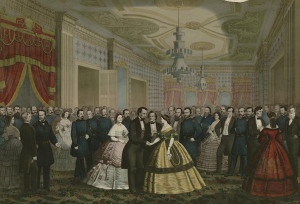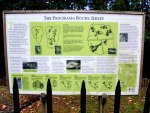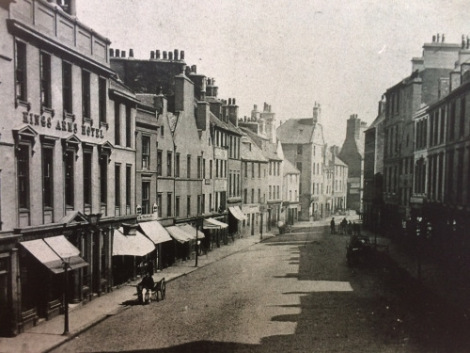Lenora Rogers's Blog, page 18
November 14, 2017
Gertrude Caton-Thomas
My first encounter with a female archaeologist was when I discovered the Amelia Peabody series by Elizabeth Peters, which recounts the adventures of the fictional Egyptologists and archaeologists Amelia Peabody, her husband Radcliffe Emerson, and their extended family. Amelia is based on Amelia Edwards, English novelist, journalist, traveler and Egyptologist, who advocated for researching and preserving ancient monuments and relics from being destroyed by modernization and tourism.
November 12, 2017
Mary Lincoln’s Gala Bash
 An artistic representation of Lincoln’s White House Gala Reception.
An artistic representation of Lincoln’s White House Gala Reception.
In early February, 1862, Presi dent and Mrs. Lincoln hosted their only huge party at the White House.
Mrs. Lincoln: New FLOTUS
For nineteen years Mrs. Abraham Lincoln was only a middle class Springfield, Illinois housewife – and the middle class part was in those later years. The early years were a struggle. When Lincoln was elected President, his last year’s earnings were $6000. Reasonable and com...
Panorama Stones, St Margaret’s Gardens, Ilkley, West Yorkshire
 Panorama Rocks Information Board at St Margaret’s Gardens, Ilkley.
Panorama Rocks Information Board at St Margaret’s Gardens, Ilkley.
OS Grid Reference: SE 11496 47298. In the woodland of St Margaret’s Gardens also known as the Park opposite St Margaret’s Church on Queens Road in Ilkley, west Yorkshire, lie (behind iron railings) three large flat stones that were originally situated upon Ilkley Moor, a mile to the southwest. These three stones or rocks were famous for their cup-and-ring carvings, but unfortunately the carvi...
IKE: Bearing Witness to the Unthinkable
 General Dwight D. Eisenhower. Ike.
General Dwight D. Eisenhower. Ike.
By early April, 1945, US soldiers in Europe were horrified by scenes that had hitherto been semi-dismissed as “rumors.”
Death Camps and Corpses
For a few years, there had been undercurrent rumors that the Germans had embarked on wholesale internment and extermination of millions of people: Catholics, gypsies, homosexuals, political dissidents – but mostly the Jews of central and eastern Europe. The mere thought was so horrific t...
Jeanette Schmid, the Cross-dressing Whistler
On the 6th of November 1924, Rudolf Schmid was born in Volary, Sudetenland (now in the Czech Republic). In 1941 he enlisted in the Wehrmacht, the German Armed Forces, aged just 17 and served in the beginning of WWII at Udine in Italy. However, Schmid’s constitution was not built for the army. “A delicate young man, he was unhappy with military life and already confused by his sexual identity. He was, as he later put it, “saved” from the army by typhoid fever, which nearly cost h...
November 8, 2017
Delve deep at Carnegie Library and unearth Ayr’s hidden past

Tuesday 26 September – Tuesday 31 October 2017
A special exhibition in Ayr Carnegie Library’s non-fiction lending area showcasing the original source material which has informed the professional archaeologists, as they prepare to dig deeper, and investigate what lies at the heart of Auld Toun. The Riverside Block on Ayr’s High Street occupies part of the earliest core of the Royal Burgh as laid out after the grant of its charter in 1205. Sitting between the late C15t...
Appropriations of Native Identity: Pocahontas and the Last Wampanoag
Remember, Remember the 5th of November
Remember, Remember the 5th of November, Gunpowder, Treason and Plot.
So, how, in the Georgian Era did England celebrate this failed attempt to blow up the Houses of Parliament? Well, it seems that things have changed little since then, bonfires, burning effigies and setting off fireworks were the order of the day, just as they are today. We thought we would take a look at a few reports from the newspapers. The first thing we should just point out is the spelling of his n...
What happened this month in history?
On November 1st, a massive earthquake some believe to be 8.5-9.0 in magnitude, struck the city of Lisbon during the morning of church commemorations, of the holy day of the Feast of All Saints. Within ten to fifteen minutes, after the earthquake had stopped, it was clear that two-thirds of the city lay in ruins. Survivors, in general, didn’t know where to turn as they tried in vain to avoid falling rumble. Those...
Pope Night in Salem
The colonial American equivalent of Bonfire Night, which has been celebrated in Britain ever since the foiling of Guy Fawkes’ and his fellow Catholic conspirators’ attempt to blow up King James I and Parliament on November 5, 1605, seems to have flourished in eighteenth-century New England as “Pope-Night” or “Pope-Day”. We have a pretty good idea of how Pope Night was observed, at least in Boston, thanks to the survival of a remarkable 1768 broadside: South End Forever. North...














